How regularly do you thoroughly clean your warehouse? Because a working space that looks spick and span is more important than you might think. You can read all about it in this article. We gathered the 5 most important advantages of a clean warehouse and introduced you to the Japanese 5S method. That way, cleaning will become a simple routine like any other for you. Clean and ruthless? It will be!
1. Safety: safety first!
First and one of the most important topics of this top 5: safety in the warehouse. Besides good personal protection and ergonomics, a clean warehouse reduces the risk of work-related accidents. Slips, trips, falls… it’s certainly a long (and dangerous) list. By cleaning your warehouse regularly, you avoid liquids on the floor and litter lying around.
The general health and personal protection of your employees is, of course, also paramount. Limit their exposure to dust or dirt to prevent occupational diseases and respiratory problems. This ensures a healthier employee and less absenteeism.
Waste accumulation of flammable materials – such as paper and cardboard – in turn increases fire risk. Therefore, always keep your warehouse clean and tidy to minimise the risk of fire. Very important for the safety of both employees and goods in the warehouse. By the way, higher safety not only leads to fewer accidents, injuries or occupational diseases in the workplace. You also avoid potential costs for compensation and rehabilitation. Better safe than sorry!

2. A clean workflow via a clean warehouse
An organised and squeaky clean warehouse also makes for a focused warehouse worker. And of course, when you say ‘concentrated’, you also mean ‘productive’. Without the obstacles of clutter or waste, warehouse workers navigate through the warehouse faster. They get easier access to materials and tools, allowing them to perform their tasks more efficiently. Therefore, this has a positive impact on logistics productivity. With a clean warehouse, companies process customer orders faster and meet their delivery deadlines better.
Moreover, a neat and organised environment boosts employee morale. Employees feel appreciated and motivated in a clean workplace, which leads to higher performance and a positive company culture. This also helps attract and retain talent.
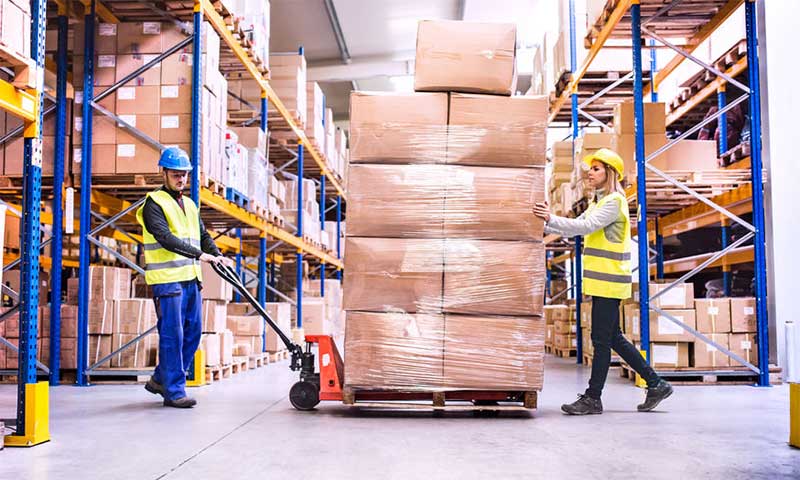
3. Protect your warehouse goods and equipment in a clean warehouse
Dust, dirt and other debris can cause serious damage to warehouse goods and equipment. This causes pricey problems such as repairs or replacement. On top of that, an inoperable machine jeopardises your daily logistics flow. That too can lead to additional (unforeseen) costs. Regular cleaning not only extends the life of packaging machines, it also keeps them in top condition for longer. Like packaging machines, stored goods also benefit from a clean warehouse. Storing hazardous materials, pharmaceuticals or foodstuffs, for example, requires extra caution.
► Sorting (seiri: 整理)
A warehouse’s available space is limited and highly valuable. That’s why you cast a critical eye over the following topics at the first step:
- What materials do I actually need?
- Which provisions have priority?
- Which items do I use on a daily basis?
- What are the actual quantities I need?
Based on these questions, eliminate unnecessary items that take up available space on the shop floor. The benefits? Less clutter, fewer distractions, less wasted time, more space ánd more accessibility. By sorting out the superfluous items, you can fully focus on the valuable ones.
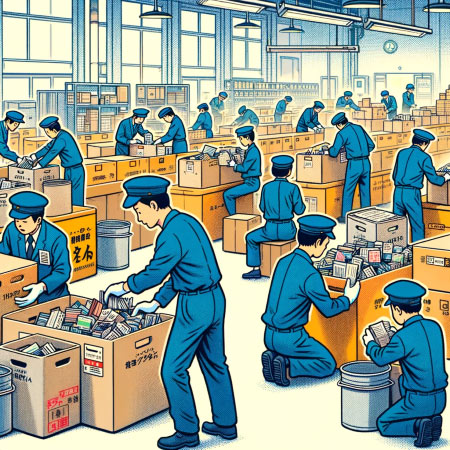
► Arrange (seiton: 整頓)
After sorting and removing unnecessary items, step 2 starts. In this phase, organise the remaining items as efficiently as possible. Find a logical and easily accessible place for each item so you don’t waste time searching. Work materials, tools or important documents are assigned a strategic location to ensure an optimal workflow.
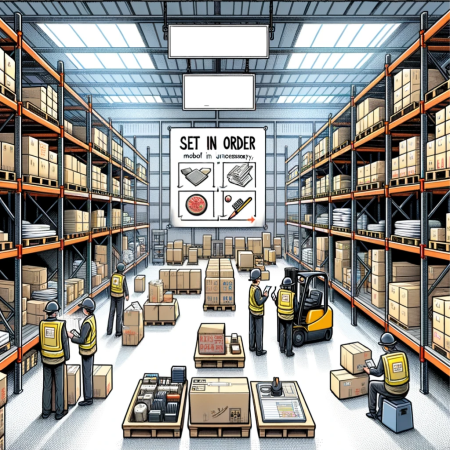
► Cleaning (seisō: 清掃)
At step 3, Japan zooms in on the importance of a clean warehouse. Simply dusting is only the beginning of a thorough cleaning. The aim is to thoroughly clean the entire workspace: machines, equipment, floors as well as other work surfaces. Regular cleaning not only ensures a more pleasant working environment, but also helps identify leaks, wear or defects early.
Warehouse cleaning is a daily task for them and is part of an overall facility cleaning plan. This is precisely why warehouse workers are essential to this system. How do you implement this? That becomes clear in the following steps.
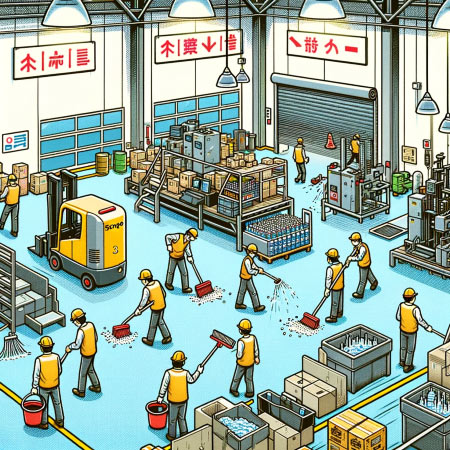
► Standardise (seiketsu: 清潔)
The organisation of a warehouse is closely linked to the layout of a warehouse. Warning signs and markings promote the distribution of goods and the use of machinery. By making different warehouse areas easily identifiable, you ensure clear demarcation of workstations, aisles, internal traffic and storage areas. On top of that, best practices and clear guidelines are essential to enforce the first 3 steps of the 5S method. This standardisation helps employees follow correct hygiene procedures.
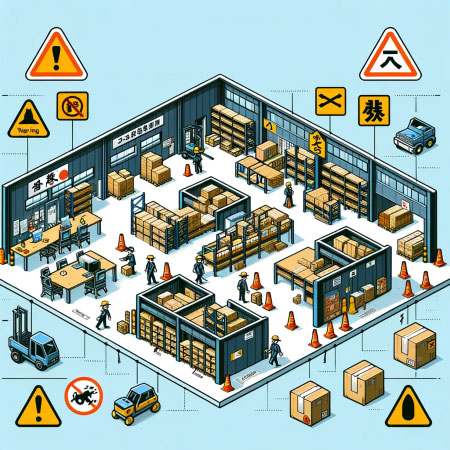
► Stand (shitsuke: 躾)
The final step puts the focus on discipline, a big part of Japanese work culture. One cultivates a mindset where everyone feels responsible to maintain or improve standards. With training and motivation, the 5S method becomes an integral part of the daily routine in the Japanese warehouse – and maybe in yours too?
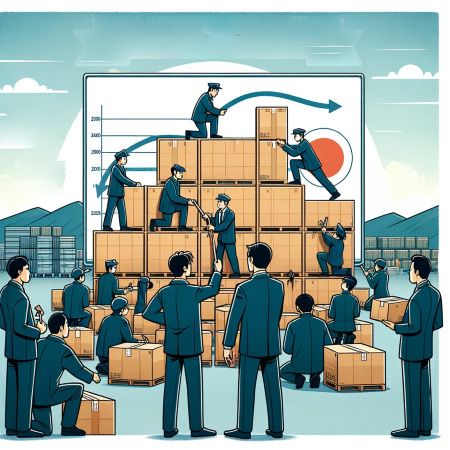
4. Benefit from accurate stock management
For this fourth benefit, we focus on the physical stock in your warehouse. Keeping your stock properly up to date is essential for the operation of your business. Depending on your warehouse size, this stock control can still be a manual counting process that requires the cooperation of many employees.
By counting physical stock, you can estimate and avoid stock shortages and surpluses in time. Therefore, good organisation is the best plan of action and that starts with a clean and tidy warehouse. Because in a clean warehouse, you get a realistic picture of stock, which makes stock management and planning much easier.

5. A clean image through a clean warehouse
The state of the warehouse directly reflects on a company’s professional image. For example, a well-maintained warehouse sends a positive signal to customers, suppliers and visitors. After all, hygiene and safety inspire confidence.
A warehouse that is systematically maintained also suggests that the company takes care of its goods. This gives customers and partners confidence that their products are handled and stored with the utmost care. This shows that your company values quality and professionalism. After all, who doesn’t appreciate a clean warehouse?

* Some images in this blog article were generated by AI.














